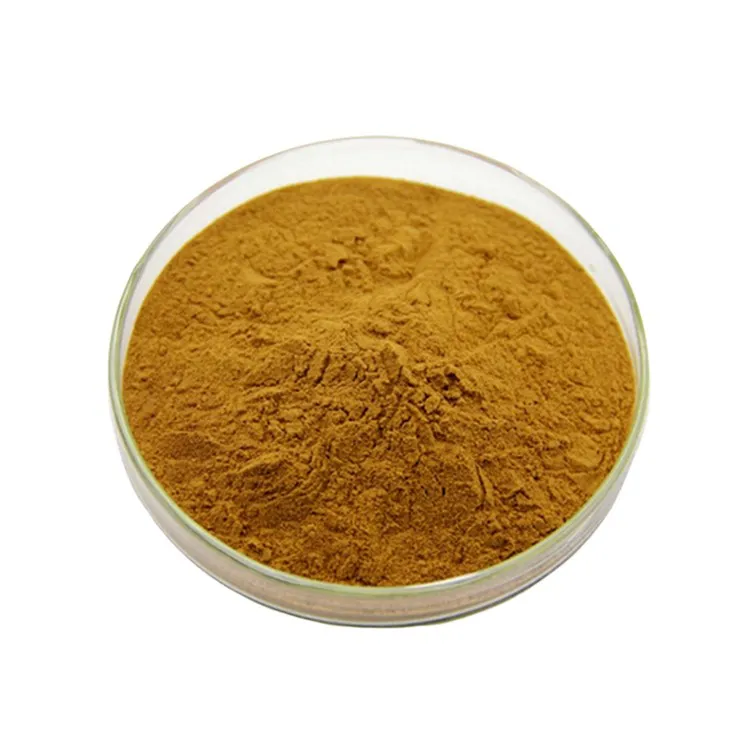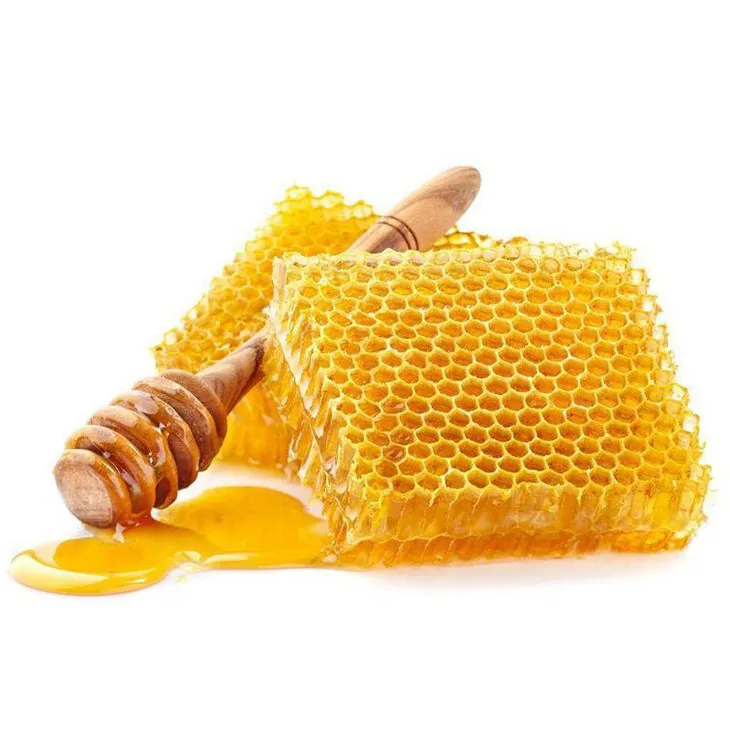- 0086-571-85302990
- sales@greenskybio.com
The process of extracting the main components of propolis from propolis extract powder.
2024-11-28

1. Introduction
Propolis is a resinous substance collected by bees from tree buds, sap flows, or other botanical sources. It has been recognized for its numerous beneficial properties, such as antibacterial, antiviral, antioxidant, and anti - inflammatory activities. Propolis Extract Powder is a concentrated form of propolis, which serves as a starting material for further extraction of its main components. The extraction process is crucial as it determines the quality and quantity of the valuable components that can be obtained for various applications in the pharmaceutical, food, and cosmetic industries.

2. Sample Preparation
2.1. Grinding
The Propolis Extract Powder may need to be ground into a finer powder if it is in a lumpy or coarse form. This increases the surface area available for extraction. A mortar and pestle or a mechanical grinder can be used for this purpose. Care should be taken to avoid overheating during grinding, as excessive heat may cause degradation of some of the heat - sensitive components in propolis.
2.2. Weighing
An accurate amount of the Propolis Extract Powder is weighed. This is important for ensuring reproducibility of the extraction process and for calculating the extraction yield. The amount of powder used will depend on the scale of the extraction, the desired concentration of the final extract, and the capacity of the extraction equipment.

3. Solvent Selection
3.1. Consideration of Chemical Properties
The choice of solvent is based on the chemical nature of the main components in propolis. Propolis contains a complex mixture of compounds, including flavonoids, phenolic acids, terpenoids, and waxes. Ethanol is a commonly used solvent as it is effective in dissolving many of the bioactive components in propolis. It has a relatively low toxicity and is suitable for applications in the food and pharmaceutical industries. However, for some more lipophilic components, solvents such as ethyl acetate or hexane may be considered.
3.2. Solvent Mixtures
In some cases, solvent mixtures can be more effective than a single solvent. For example, a mixture of ethanol and water in different ratios can be used to optimize the extraction of both polar and non - polar components. The polarity of the solvent mixture can be adjusted according to the composition of the propolis extract powder.

4. Extraction Technologies
4.1. Maceration
Maceration is a simple and traditional extraction method. The weighed propolis extract powder is placed in a closed container with the selected solvent. The mixture is allowed to stand at room temperature for a certain period, usually several days to weeks. During this time, the solvent penetrates the powder and dissolves the soluble components. The advantage of maceration is its simplicity and low cost. However, it is a time - consuming process and may not achieve a high extraction efficiency.
4.2. Soxhlet Extraction
Soxhlet extraction is a more efficient method for continuous extraction. The propolis extract powder is placed in a Soxhlet thimble, and the solvent is continuously recycled through the powder. The solvent vaporizes in the distillation flask, rises through the condenser, and then drips back onto the powder in the thimble. This process is repeated multiple times, ensuring thorough extraction. Soxhlet extraction can achieve a relatively high extraction yield in a shorter time compared to maceration. However, it requires more complex equipment and may be more energy - consuming.
4.3. Ultrasonic - Assisted Extraction
Ultrasonic - assisted extraction utilizes ultrasonic waves to enhance the extraction process. The ultrasonic waves create cavitation bubbles in the solvent, which collapse and generate intense local heating and pressure. These effects help to break down the cell walls of the propolis components and improve the mass transfer between the solid powder and the solvent. This method can significantly reduce the extraction time and increase the extraction efficiency. It is also a relatively clean and environmentally friendly extraction technology.
4.4. Supercritical Fluid Extraction
Supercritical fluid extraction uses a supercritical fluid, such as supercritical carbon dioxide (sc - CO₂), as the extraction solvent. Supercritical fluids have properties between those of a gas and a liquid, with high diffusivity and low viscosity. sc - CO₂ is non - toxic, non - flammable, and can be easily removed from the extract. This method is highly selective and can be used to extract specific components from propolis with high purity. However, it requires specialized and expensive equipment.

5. Post - Extraction Processing
5.1. Filtration
After the extraction, the resulting mixture contains the dissolved propolis components and the solvent, as well as any undissolved solids. Filtration is carried out to separate the liquid extract from the solid residues. This can be done using a filter paper, a Buchner funnel with a filter membrane, or a more advanced filtration system such as a membrane filter. Filtration helps to clarify the extract and remove impurities.
5.2. Concentration
The filtered extract may contain a large amount of solvent, which needs to be removed to obtain a more concentrated product. Concentration can be achieved by methods such as evaporation under reduced pressure or rotary evaporation. These methods allow the solvent to be removed at a lower temperature, minimizing the degradation of the heat - sensitive components in the propolis extract.
5.3. Purification
Purification is an important step to ensure the quality of the final product. Chromatographic techniques such as column chromatography, high - performance liquid chromatography (HPLC), or gas chromatography (GC) can be used to separate and purify the main components of propolis. These techniques are based on the differential adsorption or partitioning of the components in a stationary phase and a mobile phase. By using purification methods, impurities and unwanted components can be removed, and the purity of the desired propolis components can be increased.
5.4. Quality Control
Quality control measures are essential throughout the post - extraction processing. Analytical methods such as spectroscopic techniques (e.g., ultraviolet - visible spectroscopy, infrared spectroscopy) and chemical assays (e.g., determination of flavonoid content, phenolic acid content) are used to monitor the quality of the extract. These methods help to ensure that the final product meets the required standards in terms of purity, activity, and safety.
6. Conclusion
The extraction of the main components from propolis extract powder is a multi - step process that involves careful sample preparation, appropriate solvent selection, efficient extraction technologies, and comprehensive post - extraction processing. Each step plays a crucial role in obtaining a high - quality extract with a high yield of the desired components. The development of more advanced and sustainable extraction methods, as well as improved quality control measures, will continue to enhance the utilization of propolis in various industries.
FAQ:
Question 1: What are the key steps in sample preparation for extracting main components from propolis extract powder?
Sample preparation for extracting main components from propolis extract powder typically involves steps such as grinding the powder to a uniform consistency if there are any lumps, ensuring proper drying to a specific moisture level if needed. Also, accurately weighing the sample to ensure the correct ratio for subsequent extraction processes is important. This helps in achieving more accurate and reproducible extraction results.
Question 2: How do you choose the right solvents for extracting main components from propolis extract powder?
The choice of solvents depends on the chemical nature of the components in propolis extract powder. For example, if the main components are polar in nature, polar solvents like ethanol or water - ethanol mixtures might be suitable. Non - polar components may require non - polar solvents. Additionally, factors such as solubility of the desired components, toxicity of the solvent, and ease of solvent removal after extraction also play a role in the selection process. Solvents with high selectivity for the target components are preferred to ensure a pure extraction.
Question 3: What are some advanced extraction technologies used for extracting main components from propolis extract powder?
Some advanced extraction technologies include supercritical fluid extraction (SFE). In SFE, supercritical carbon dioxide is often used as the extraction medium. It has advantages such as being non - toxic, having a low critical temperature, and providing good selectivity. Another technology is microwave - assisted extraction (MAE), which uses microwaves to accelerate the extraction process by heating the sample and solvent mixture more efficiently. Ultrasonic - assisted extraction (UAE) is also employed, where ultrasonic waves create cavitation bubbles in the solvent, enhancing mass transfer and thus improving extraction efficiency.
Question 4: Why is post - extraction processing important for purifying the main components from propolis extract powder?
Post - extraction processing is crucial for purifying the main components from propolis extract powder because the initial extraction may yield a mixture that contains not only the desired components but also impurities. Purification steps can remove these impurities, such as other plant - derived substances, residual solvents, and unwanted by - products. This ensures the quality and safety of the final product, making it suitable for various applications, for example, in the pharmaceutical or nutraceutical industries.
Question 5: How can one ensure the quality of the final product when extracting main components from propolis extract powder?
To ensure the quality of the final product, strict quality control measures should be implemented throughout the extraction process. This includes using high - quality propolis extract powder as the starting material, accurately following the extraction and purification procedures, regularly monitoring the process parameters such as temperature, pressure, and extraction time. Analytical techniques like chromatography (e.g., HPLC) can be used to analyze the purity and composition of the final product. Additionally, compliance with relevant regulatory standards for the intended use of the product (e.g., food or drug regulations) is essential.
Related literature
- Extraction and Characterization of Propolis: A Review"
- "Advanced Techniques for Propolis Component Extraction: Current Trends and Future Perspectives"
- "Optimization of Solvent Extraction for Main Propolis Components: A Comprehensive Study"
- ▶ Hesperidin
- ▶ citrus bioflavonoids
- ▶ plant extract
- ▶ lycopene
- ▶ Diosmin
- ▶ Grape seed extract
- ▶ Sea buckthorn Juice Powder
- ▶ Beetroot powder
- ▶ Hops Extract
- ▶ Artichoke Extract
- ▶ Reishi mushroom extract
- ▶ Astaxanthin
- ▶ Green Tea Extract
- ▶ Curcumin Extract
- ▶ Horse Chestnut Extract
- ▶ Other Problems
- ▶ Boswellia Serrata Extract
- ▶ Resveratrol Extract
- ▶ Marigold Extract
- ▶ Grape Leaf Extract
- ▶ blog3
- ▶ blog4
-
Nature's Bounty Okra Extract.
2024-11-28
-
Chinese Oyster Peptide Powder Factories.
2024-11-28
-
The best organic L - carnitine.
2024-11-28
-
Certified organic acerola cherry extract.
2024-11-28
-
Wholesale β - carotene suppliers.
2024-11-28
-
Chinese lemon balm extract factories.
2024-11-28
-
100% Pure Organic Bitter Melon Extract.
2024-11-28
-
Hops Extract
2024-11-28
-
Black Rice Extract
2024-11-28
-
Curcumin
2024-11-28
-
Black Pepper Extract
2024-11-28
-
Grapefruit Seed Extract Powder
2024-11-28
-
Grape Leaf Extract
2024-11-28
-
Ivy Extract
2024-11-28
-
Eucommia Ulmoides Extract
2024-11-28
-
Yellow Pine Extract
2024-11-28
-
Curcuma Longa Extract
2024-11-28





















